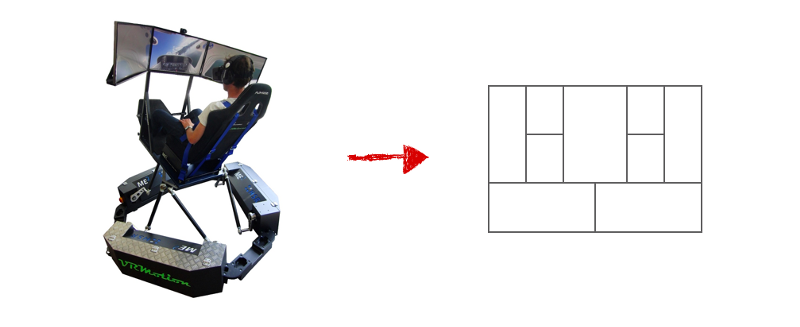GOLEAN? No, this isn’t some blatant battle cry for going lean. It’s a mnemonic for a growth framework I created for my last book: Scaling Lean — one that draws heavily on lean startup principles and systems thinking:
Goal
Observe and Orient
Leverage
Experiment
Analyze
Next Action
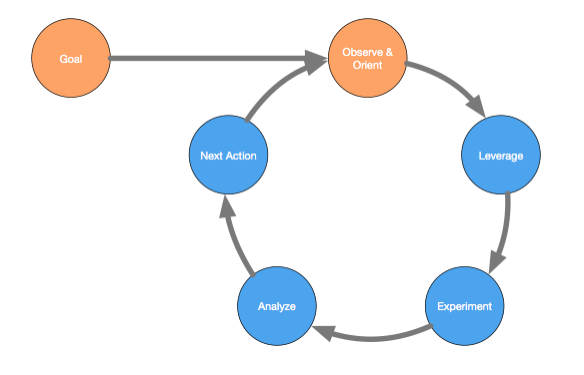
Why the Build-Measure-Learn loop isn’t enough?
The Build-Measure-Learn loop, codified by Eric Ries, powers the lean startup and draws its inspiration from the Scientific Method. The closest equivalent to a cycle around this loop is running an experiment. But even in science, simply running experiments is not enough.
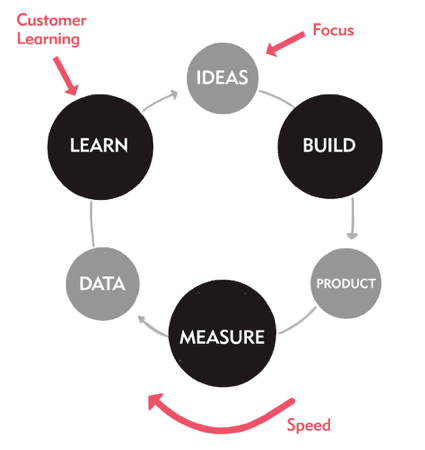
Before running experiments, scientists begin with models. They use these models to formulate hypotheses and compute consequences, which they then validate (or, more accurately, invalidate) through experiments.
Entrepreneurs similarly need to begin with (business) models. Even the original “lean thinking,” which also influenced the lean startup, has a planning step before building (or doing) — one that, in our exuberance for action, we often skip or don’t emphasize nearly enough.
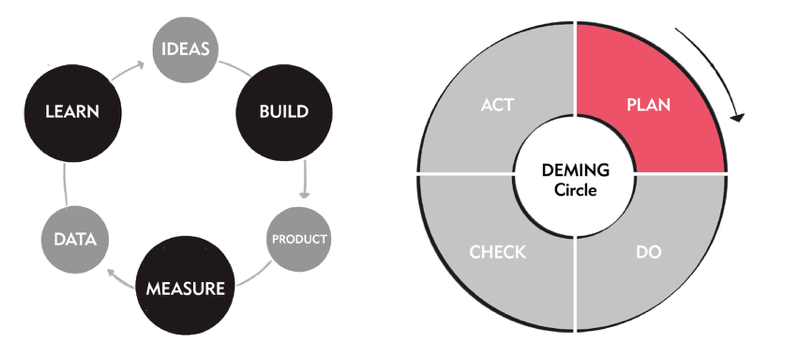
Furthermore, startups are not a perfect science. While validated learning is easy to confirm in the success case, learning from invalidation (failed experiments) or learning despite seemingly inconclusive or qualitative results is more par for the course. This often requires additional steps beyond “learn.”
GOLEAN does not replace, but extends the Build-Measure-Lean experimentation loop with additional steps for modeling, planning, and systemization.
Why the emphasis on “growth”?
Innovation is the process of turning an invention into a business model. Still, you need a growth process to realize the full potential of a business model, i.e., carry it from problem/solution fit to product/market fit to scale.

While I’m an advocate of pursuing a staged growth strategy, every business needs to cultivate a growth mindset from day one. The first job of every business is growing from zero to one customer (the singularity moment of a product). Every business then needs to double from 1 to 2 customers, then 2 to 4 customers, and so on. So growth is a universal directive. The only difference is how many times you double and how often.
Facebook, for instance, doubled 30 times in 8 years to reach a billion users. Another business might go from 1 customer to 1,000 customers in 4 years — doubling ten times.
With that, let’s dive into the GOLEAN Framework…

Goal — How will you measure success?
There is nothing novel about starting with goals, but too often, goals are either too big, too fuzzy, or too many — which leads to a dichotomy of progress stories.
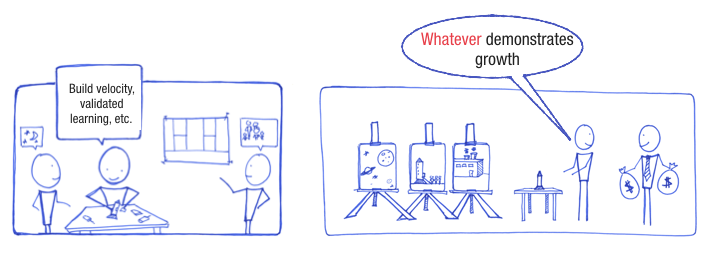
Instead of aiming for the maximum upside potential of your idea (which is hard to estimate at the outset), aim for time-boxed minimum success criteria.
The minimum success criteria is the smallest outcome that would deem your project a success in X years where X <= 3.
Instead of aiming for too many goals, define and aim for a single traction metric.
Traction is the rate at which a business model captures monetizable value from its customers.
Traction measures the output of your business model and serves as an unequivocal measure of progress — one that both investors and entrepreneurs want to see go up and to the right.
The old way of doing this:
- Write a business plan
- Create an Excel magic spreadsheet
- Target multiple goals
The new way of doing this:
- Sketch a Lean Canvas
- Create a Fermi back-of-the-envelope estimate
- Target one goal
Observe and Orient — Where do you stand today?
With your goal defined, chart your progress against a projected traction model as shown below:
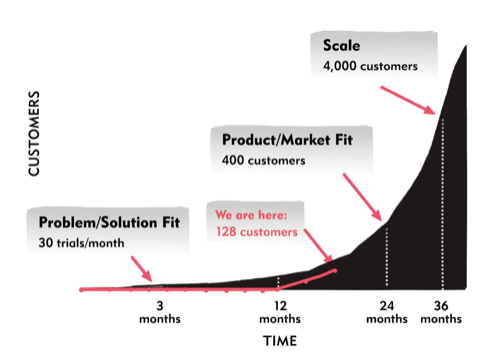
Positioning your progress this way allows you to identify what stage of the product lifecycle you’re in, which in turn helps to inform the type of strategies and tactics you could employ to grow.
But while your traction metric serves as a reliable “mileage indicator,” it doesn’t tell you how to course-correct when you’re not tracking per plan. Simply hoping, wishing, or willing yourself to achieve more traction will not cut it. You have to deconstruct your traction metric further — Shifting focus from the output to the inputs of your traction model.
Rather than chasing after hundreds of numbers, start with just five: AARRR. The picture below shows the Customer Factory Blueprint, a a systems view of Dave McClure’s Pirate Metrics. Map each one to the set of measurable user actions that lead up to them and build out a company-wide dashboard that you keep updated weekly.
Progress is relative and cannot be determined by a single snapshot.
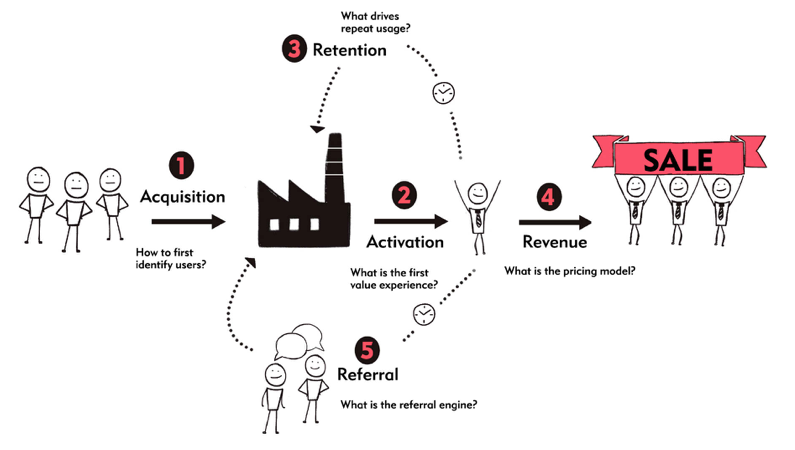
The old way of doing this:
- Measure everything
- Drown in a sea of data
The new way of doing this:
- Measure 5 macro AARRR metrics
- Build a company-wide dashboard
Leverage— What are the levers for growth?
Theoretically, you can grow the output of your customer factory by simultaneously optimizing all five steps in the blueprint. The reality is quite different.
First, optimizing everything at once can be a huge resource and focus drain. Not all bottlenecks will have equal ROI, and even those that start strong will eventually begin yielding diminishing returns with time.
But more important, optimizing everything at once can actually make things worse. Your customer factory is a system of interconnected steps, and simply optimizing one local step does not always lead to a global increase in throughput.
Here are some quick examples:
- Increasing sales conversion through aggressive closing tactics might result in higher customer dissatisfaction and churn over time.
- Increasing engagement in your product might give away so much value for free that users forget to buy from you.
Instead of optimizing everything all at once, the leverage step is all about identifying the key lever, the single domino, or the single constraint that, if you were to address, stands to create the biggest impact in your business model.
Rather than guessing, you can methodically uncover these levers by applying systems thinking or, more specifically, the focusing steps described by Eliyahu Goldratt in his seminal work: The Theory of Constraints.

Instead of specializing your teams into departments that own one of these metrics, have the entire team (or multiple small teams) work on a single constraint until it is broken. Then, identify the next constraint and repeat.
While this may seem inefficient, it’s not. Constraints live in the problem space, not the solution space. Focusing the team on a single constraint will yield not just one but many possible high-impact solutions.
These problem/solution proposals can be captured on a 1-page Validation Plan which is an effective template for sourcing and sharing ideas.

You then prioritize these validation plans and test them through the next step: Experiment.
The old way of doing this:
- Optimize everything
- A never-ending backlog of many small and big ideas
- Lots of wasted effort and lack of focus
The new way of doing this:
- Focus on only one constraint at a time
- A prioritized list of ideas captured on a 1-page Validation Plan
- More flow and movement toward right action, right time
Experiment — Test big ideas quickly
This is where the Build-Measure-Learn loop shines. I’ve already written a lot about how to test big ideas using small, fast, additive experiments here. So I’ll instead focus on the importance of establishing a regular rhythm or cadence for running experiments.
Many people create experiments of varying sizes (small, medium, large) which make them harder to track. I instead advocate keeping all the experiments the same size by fitting them into a time-boxed sprint, like two weeks. Of course, not all ideas will fit within the experiment time-box. The way you allow for size variability across your ideas is by imposing a different and larger time box on your overall validation plan. These can range between 30–90 days.
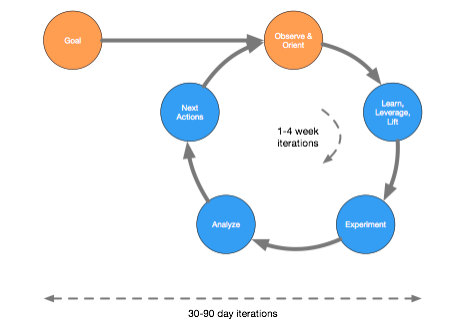
Time-boxing your experiments require creativity, shorten the feedback loop, but most important, force action.
Analyze — What’s the business model impact?
The analyze stage might sound a lot like the learning stage in the Build-Measure-Learn loop. The difference is in scope. While “learn” operates at an individual experiment level, “analyze” can operate across multiple experiments and is applied at the strategy and/or business model level.
If, for instance, your team came up with two possible (but mutually exclusive) solutions to a constraint, you might decide to split-test them in parallel. You would use the analyze stage to reconcile your learnings across both experiments into a single solution that you carry forward.
Next Actions — How do we systemize learning?
There is a distinction between what you learn from an experiment and what you do then do with that learning. You don’t get a gold star for learning but for turning your learning into business model results. That requires systemizing your learning across the organization so it can be repeated and scaled. This stage is about making these kinds of decisions.
For instance, you might take a price anchoring technique that worked in your customer interviews and systemize it into your sales training. Or, in the face of a failed experiment or inconclusive data, you might decide to run a new learning experiment in search of answers. Or, if the constraint is broken, you would identify the next constraint, set a new goal, and repeat the process.
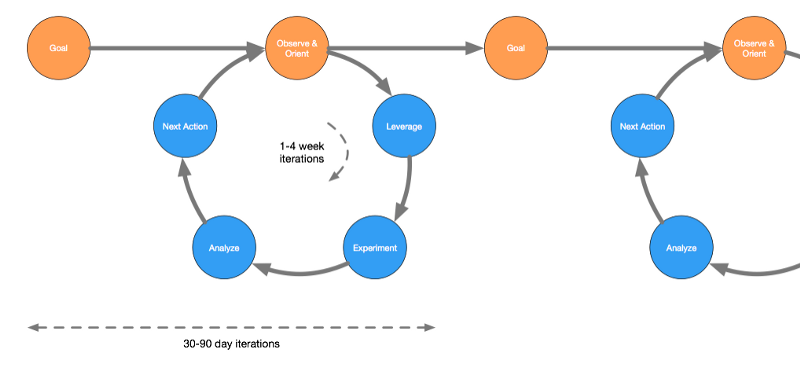
.
.
Where Can You Learn More?
That was a 3000-ft view of the GOLEAN framework. I’ll leave you with a daily activity view, so you see what it looks like in action.
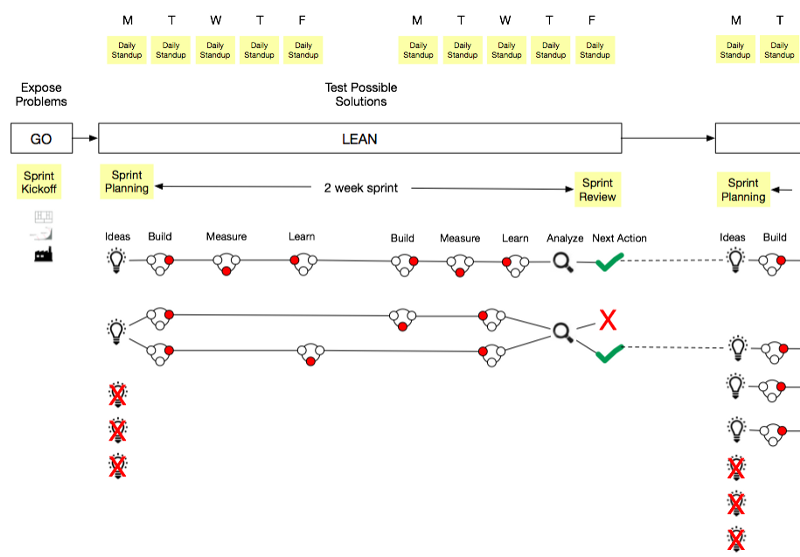
If you’d like to dig in deeper, I cover this framework in greater detail in the Scaling Lean book. You can pick up a copy here.

